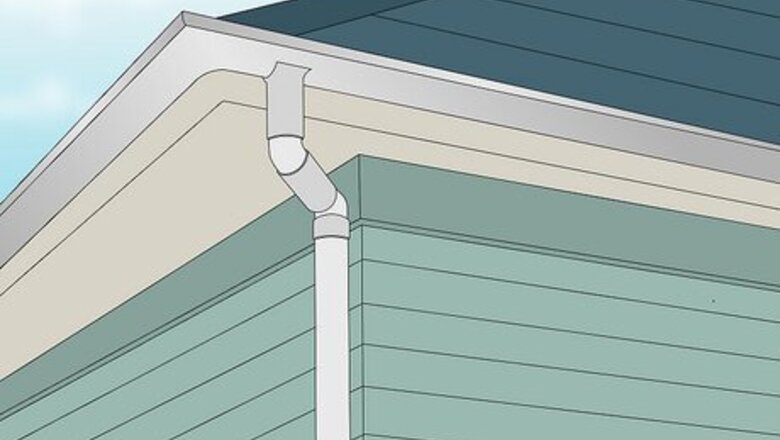
views
Selecting a Catchment Area

Designate a section of your roof. If you’re looking for a simple water collection solution that will allow you to begin harvesting right away without making any costly updates to your home, just look up. The roof is the most commonly used catchment area. It’s also the most easily adapted, thanks to the expediency of gutters and other fixtures. For best results, designate a downspout directly beneath a steep part of the roof where water tends to accumulate. Pick an area behind or off to one side of your home to keep your water collection system hidden from view.

Look for places where water collects naturally. Since rainwater can collect at the base of any sloped surface, you’re not limited to using your gutters. Following a heavy downpour, survey your property for areas where shallow pools, streams, and overflow begin to form. Any of these spots can serve as an effective catchment area. Remember: water settles at low elevation. If you live on a hill, you may need to scope out the perimeter of your property to find a suitable open-air collection site.
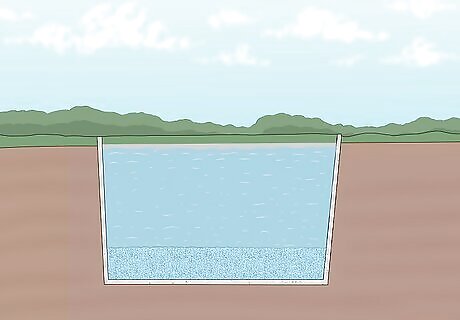
Pave open reservoirs to create a cistern. To minimize the amount of water lost through seepage, spread a thin layer of concrete or a mixture of tightly-packed gravel and sand over the bottom of an open-air pool or stream. Lining ground-level catchment areas will also keep mud from leaching into the fresh water and prevent it from being tainted by other surface contaminants. Some cities have ordinances that heavily regulate the use of cisterns and other water collection systems. For this reason, this option may be better suited to those who live in rural areas. In hot, dry climates, there’s a chance that much of the water could be lost through evaporation before you’ve had the chance to make use of it.
Channeling the Runoff
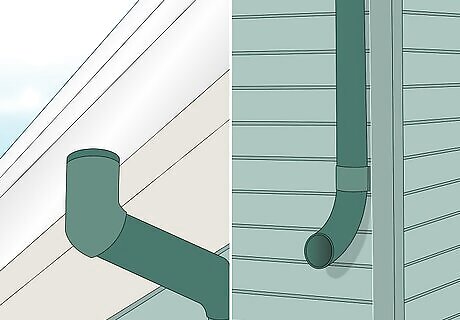
Use your home’s gutters. Most residences are already equipped with a means of channeling excess runoff—the gutters. This is the simplest way to set about harvesting rainwater, as all it requires you to do is set out a few containers to catch what drains off of the roof. Standard 5” gutters with 3” downspouts will be large enough for most average-sized homes. For roofs with significantly more surface area, you may need to replace smaller gutters with slightly larger 6” gutters with 4” downspouts to control the flow of water. In general, sheet metal roofing make the best surfaces for collecting rainwater. Wood shakes, asphalt shingles, and clay tiles are also acceptable, though these materials tend to be more hospitable to mold, moss, and algae.
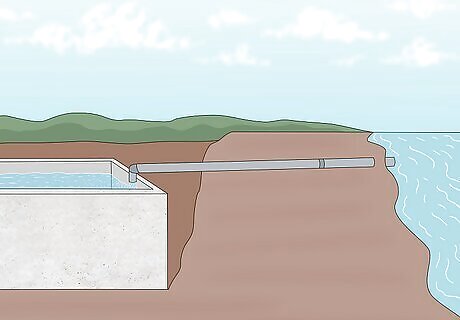
Direct the water through a secondary conveyance system. If you’ve chosen someplace other than your roof to serve as your catchment area, you’ll need a way to reroute the runoff to where it will eventually be stored. You can accomplish this by digging a shallow channel at the water’s source (for instance, the edge of a natural basin or along the stream). Then, lay a series of pipes within the recess. You can configure the pipes as needed to create a makeshift irrigation system and carry the water where it will be most useful. Durable materials like copper or aluminum pipes or PVC tubing make for long-lasting channels that won't introduce any other harmful compounds to the runoff water. Keep in mind that the channel must have enough slope to keep the water moving. This may help determine the location you ultimately decide on.

Keep the water close to its intended destination. If you’re planning on using your reserves to water flowers or grow fruits and vegetables, for example, set up your conveyance system so that it delivers the water to the side of the house nearest the garden. That way, you’ll always have a convenient supply on hand. Consider the placement of your storage system carefully. Once the water has filled the containers, it can be difficult to transport it elsewhere.
Collecting the Water
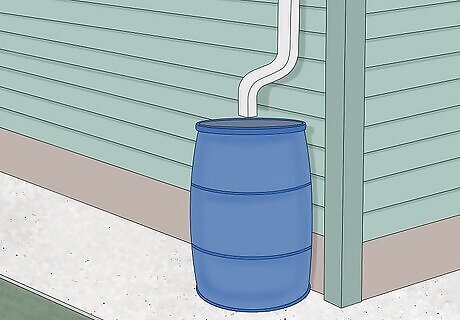
Set out one or more high-capacity containers. Plastic rain barrels are the most common method of harvesting rainwater. A single rain barrel is spacious enough to hold 50 gallons (190 L) of water or more. Specially-designed barrels feature built-in filtration screens and spigots for ease of application, and can be purchased at most gardening centers. If you’re unable to find premade rain barrels, a wooden barrel, or even a lidded plastic trash can will do. Connect multiple barrels with a short length of hose so that they’ll fill and drain at the same rate. No matter what type of container you choose for your collection system, make sure the materials it’s made from are opaque. Blocking out the sunlight will prevent mold and algae from growing inside the barrels.

Elevate the barrels for better water pressure. Dig a shallow trough at your designated catchment area and fill it with tightly-packed gravel. Cover the gravel with cinder blocks or stacked wooden pallets and set the barrels on top. The added height will allow the water to flow from the spigot more easily. The gravel is there to absorb overflow and keep it from saturating the foundation of the house. Raising your storage containers makes it easier to position a bucket or watering can beneath the spigot.
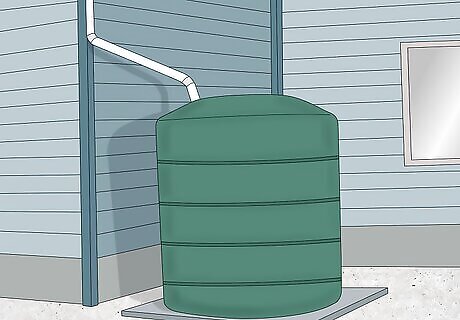
Install a dedicated cistern. If you’re serious about your conservation efforts, you might consider investing in a much larger above or below-ground storage system. This will make the project much involved, as you’ll have to find a suitable location for the tank or even excavate your yard to make room underground. Once it’s finished, however, you’ll be able to collected far greater quantities of water than is possible using conventional systems. Below-ground systems can get very expensive. These are recommended primarily for people who intend to use rainwater to replace running water for the majority of their daily needs.
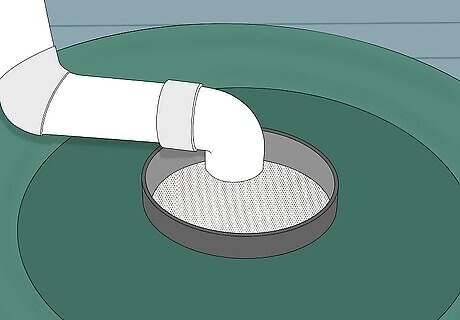
Filter the harvested water. As a basic filtration system, you can use a sheet of fine mesh screening cut to fit over the opening of the container. In-tank chemical filtration devices, first-flush diverters, and substances like activated charcoal are another option. These will help strain bacteria, heavy metals, and other undesirable substances from natural rainwater. To deter mosquitos and limit the water’s exposure to bacteria and other pollutants, be sure to keep the container covered at all times. Aim to drain and clean your storage containers every 3-5 years to keep them sanitary.



















Comments
0 comment